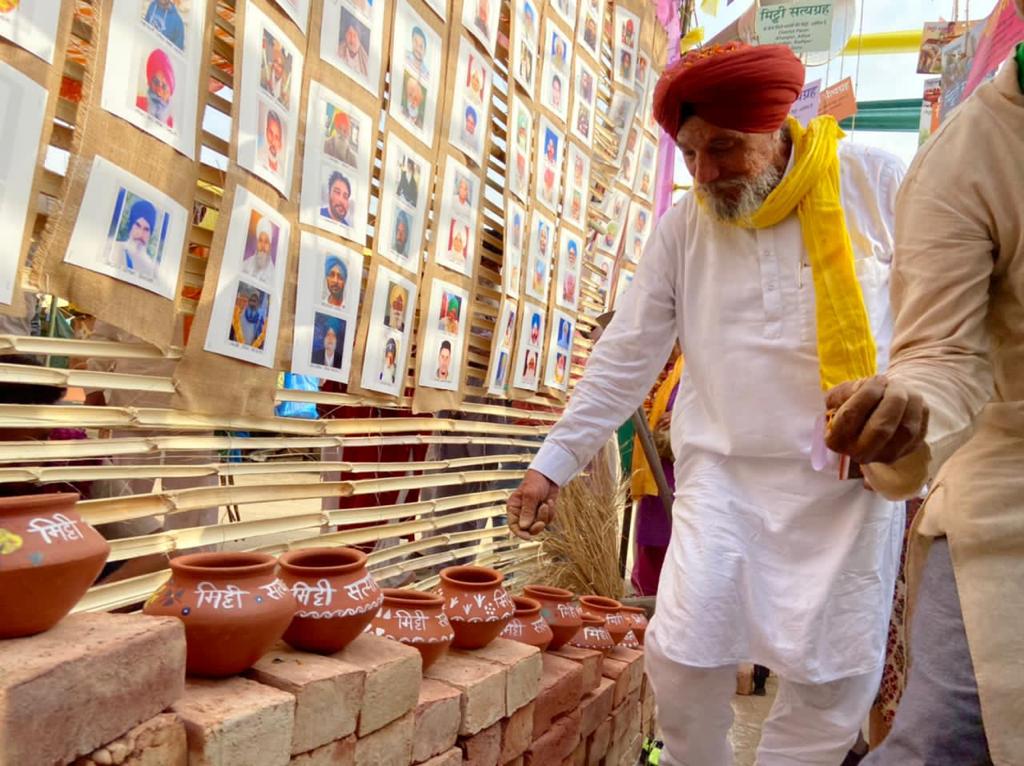
As many as 360 people died by April 7, 2021 while participating in the nationwide farmer’ struggle, they are now seen as martyrs of the movement. Many martyrs were the sole breadwinners of their families, their absence an irreparable loss that left many families haplessly fending for themselves. Yet, when Mitti Satyagraha Coordinator Guddi Tiwari talked to a mother about her son’s death, she received the reply, “If I had four sons, I would have sent them to each Delhi border.”
As an homage to this brave declaration, five memorials nowadays stand near Singhu, Tikri, Ghazipur and Shahjahanpur borders. Every memorial contains the soil accumulated by the satyagraha from various historical places like freedom fighter Bhagat Singh’s village Khatkhad Kalan, Sukhdev’s village Ludhiana, Udham Singh’s village Sangrur, Chandrashekhar Azad’s birthplace Bhabhara, Jhabua, Bardoli farmer movement sites, Sivasagar in Assam, Singur and Nandigram in West Bengal, Uttar Dinajpur, Vasava Kalyan and Bellary in Karnataka and hundreds of other places from Maharashtra, Andhra Pradesh, Odisha, Telangana, Uttar Pradesh, and Bihar.
However, what surprised Tiwari were appeals from local artists to contribute in the making of these memorials. Visual artist Kulpreet Singh from Patiala, Punjab reached out to organisers offering to help in the making of memorials at Singhu and Ghazipur border. What resulted from this offer were two sculpted jyots (flames) using proficiently-cut metal sheets with images of grains, farmers tilling the field, their bullock driven plough, the sun and the moon.
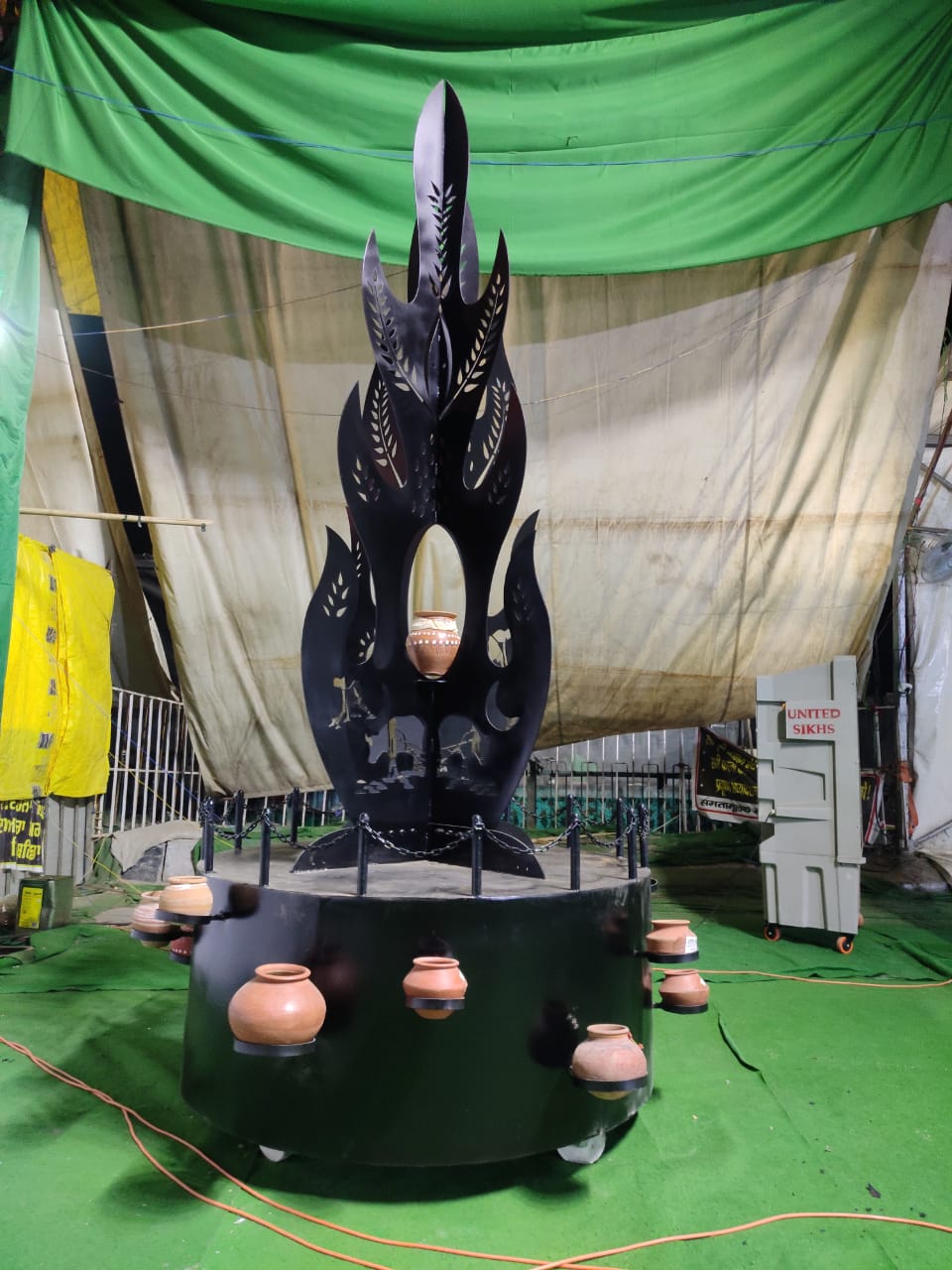
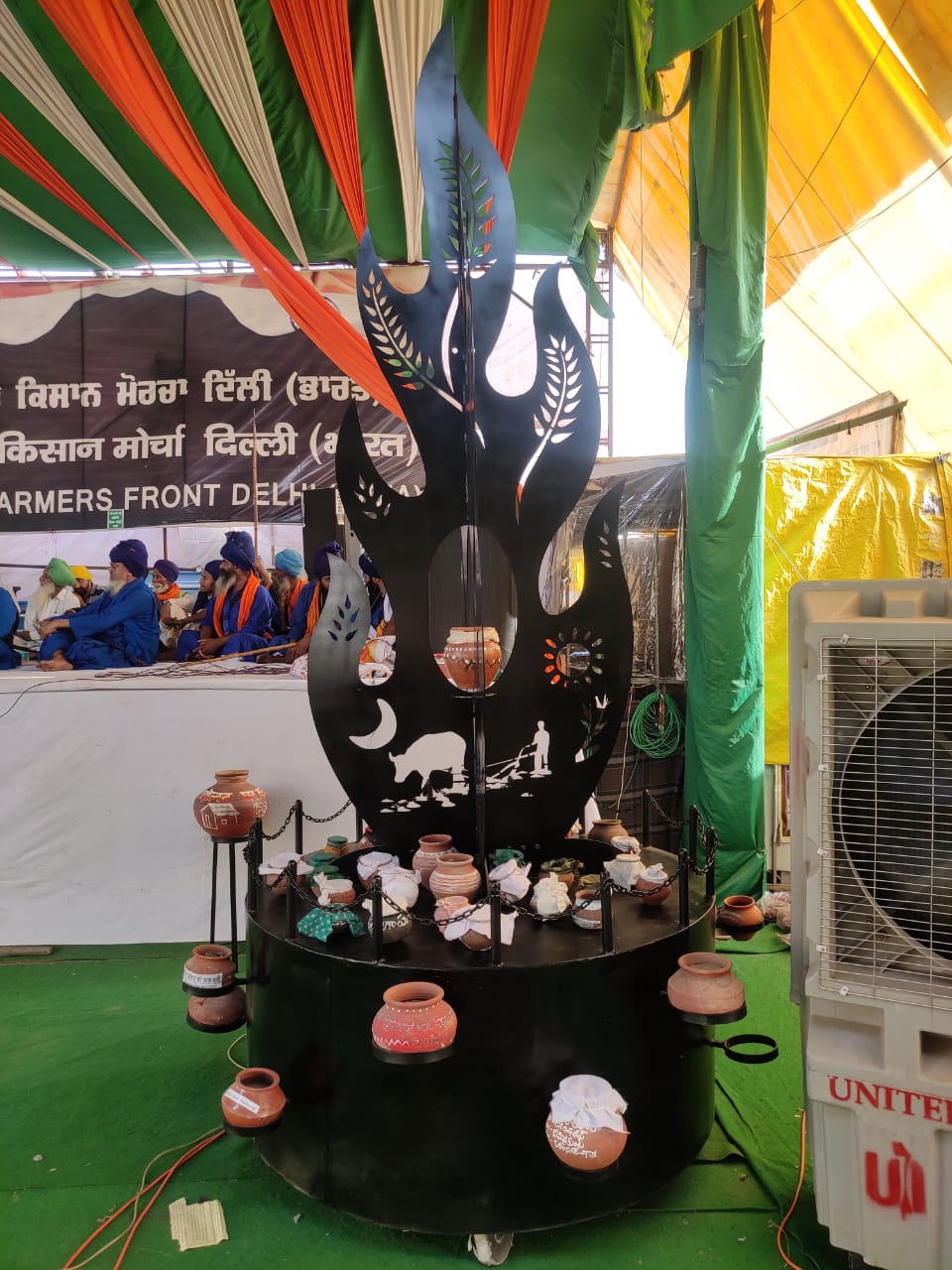
“The construction is welded together and painted in black for extreme contrast with the surroundings and the gaps of the cut outs,” says Singh while speaking to SabrangIndia.
Special pegs attached to the structure, allow for the satyagraha’s kalash (earthen pots) to surround the flame. One pot was also kept at the centre of the flame. Singh says the memorial conveys how a farmer wars and works with natural elements like the wind, water, and fire to feed the whole nation.
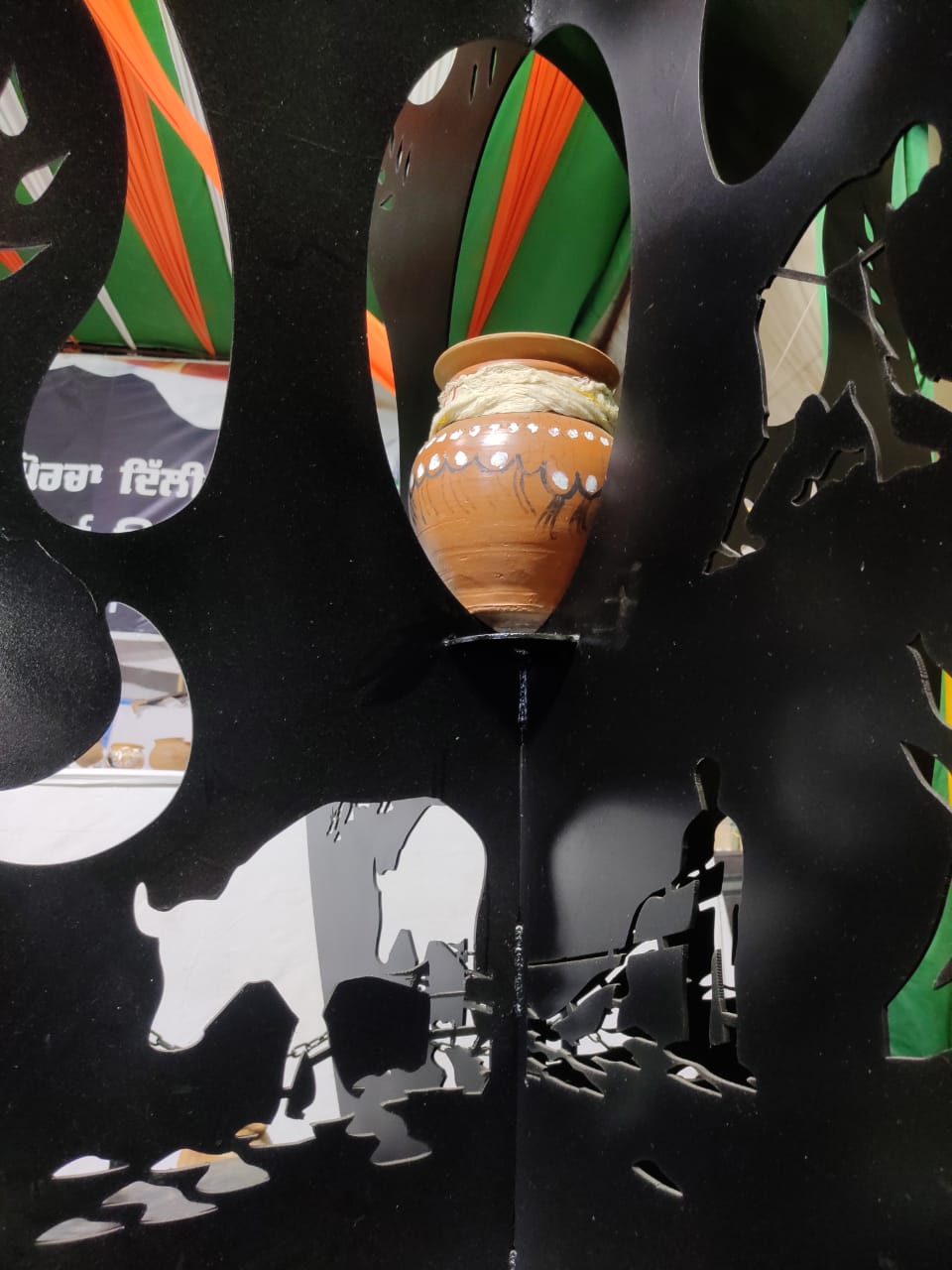
“Today that same farmer is sitting at Delhi borders for his basic rights. This sculpture is dedicated to all who sacrificed their lives for the good of all. It has been named the Martyrs’ Column. This work belongs to everyone coming to Singhu and Ghazipur. This is yours too. Just like the soil, this work belongs to all of India. It is a symbol of reverence rather than a sculpture,” he says.
The veteran artist has been participating in the farmers’ struggle against the three laws since the rail-roko protests in Punjab. Regarding the events that unfolded in past months, he says that the government has behaved poorly and argued that a vibrant democracy thrives on mutual respect between the government and the public.
He also praises the mitti satyagraha by quoting Guru Govind Singh, “मानस की जात सबैएकै पहिचानबो,” which roughly translates to recognise the whole human race as of one caste. Singh said the satyagraha rose from all religious beliefs and castes; blurring the lines of the upper and the lower (economically and socially) and reached the Singhu border.
Similarly, ANHAD Founding member Shabnam Hashmi hails the atmosphere at and around Tikri border protest sites, where people from various sections of society had arrived to express solidarity to the movement, saying, “You can see Bhagat Singh’s legacy at these sites. It is amazing. You return from there energised after witnessing the power of the movement.”
Hashmi along with Bhavna Sharma, Leena Dabiru, Gauhar Raza arrived 48 hours before the satyagraha arrived at the Bahadurgarh protest site near the Tikri border to create an installation to honour the farmer martyrs. The end result was a melange of martyr photos, painted kalash and plants to represent a better future, said Tiwari.
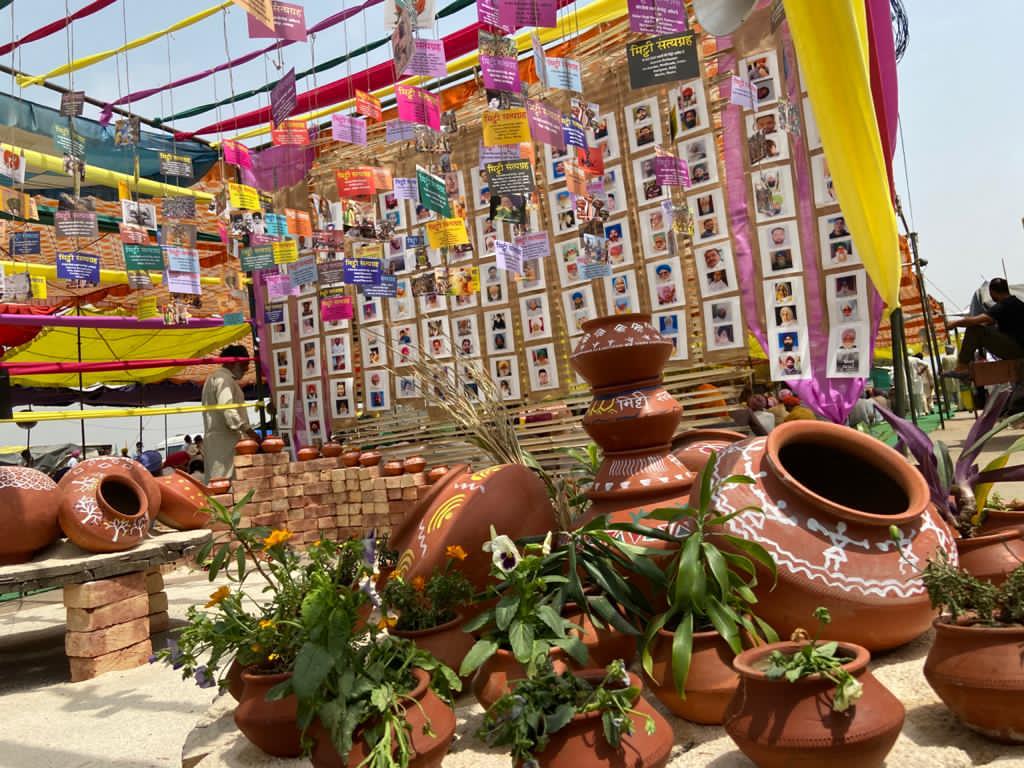
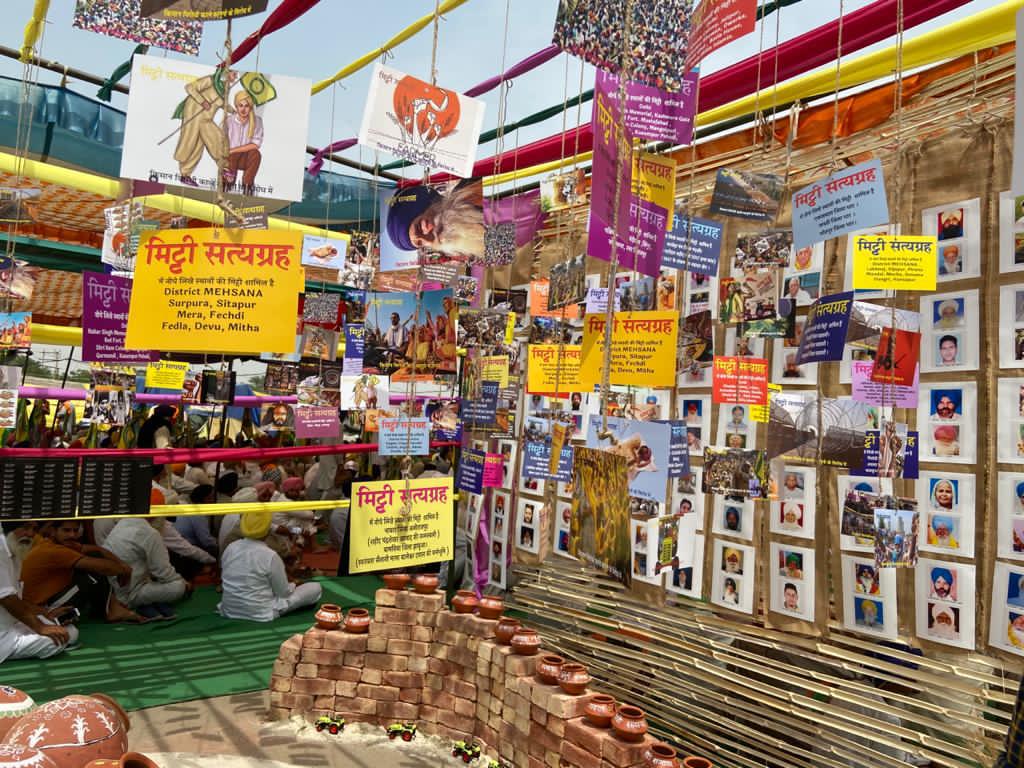
SKM leaders such as Balbir Singh Rajewal, Dhanpal Singh and Harinder offered the photos while the Trolley Times group provided a list of all the deceased. The temporary memorial was inaugurated with a special anthem that was sung by singers Vedi and Pakhi Sinha.
Both Hashmi and Tiwari assert that the satyagraha and ensuing reactions refute mainstream media’s claim of “a weakening struggle.” Around three to four lakh farmers continue to protest near city borders, says Hashmi, while Shahjahanpur and Ghazipur borders boast a strength of thousands of protesters.
“This matured movement is an image of a single mulk fighting to protect the constitution. It is also a movement that recognises the huge participation of women. It is not easy to live four months in a trolley but they stand firm on their demands,” she says.
Similarly, Tiwari applauds all villagers, who sent the soil of their villages to the satyagraha through buses and trains. Even in Gujarat, where state police hindered their procession and cancelled their events, citizens collected and presented the soil from 400 state villages to the satyagraha at Ahmedabad. To Tiwari, it proves that the emotion and individual freedom of Gujarat farmers cannot be stopped despite state repression.
An artist from the state capital had also asked to create the Shahjahanpur borders. Now, the area near Rewari is marked by hundreds of kalash hoisted on black poles to honour martyrs who fought for farmers’ rights.
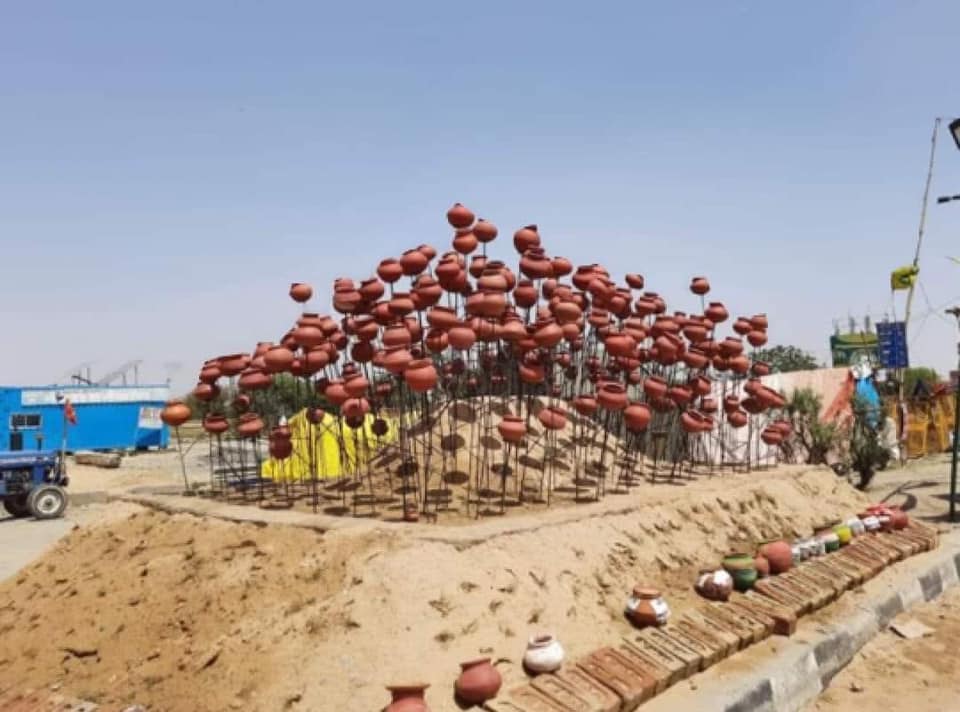
About mitti satyagraha
A collective of India’s people’s movements came together to start a soil satyagraha, reminiscent of the historic salt march carried out by Mahatma Gandhi during the Independence struggle. Participants were to pick up a fistful of soil and pledge to defend India’s fields, rivers, lakes and the public sector from private corporations.
Specifically, it honoured martyrs who died while decrying the central farm laws – the Farmers (Empowerment and Protection) Agreement on Price Assurance & Farm Services Act, the Farmer’s Produce Trade and Commerce (Promotion and Facilitation) Act, the Essential Commodities (Amendment) Act – in the second half of the march.
Related:
Mitti satyagraha begins on the same day as the historic salt satyagraha!
Farmer dies at Ghazipur border, family booked for draping body in Tricolour
Farmer Navreet Singh’s death not due to gun-shot injury: Police to Delhi HC
144 peasants died during farmers’ struggle since November 24, 2020